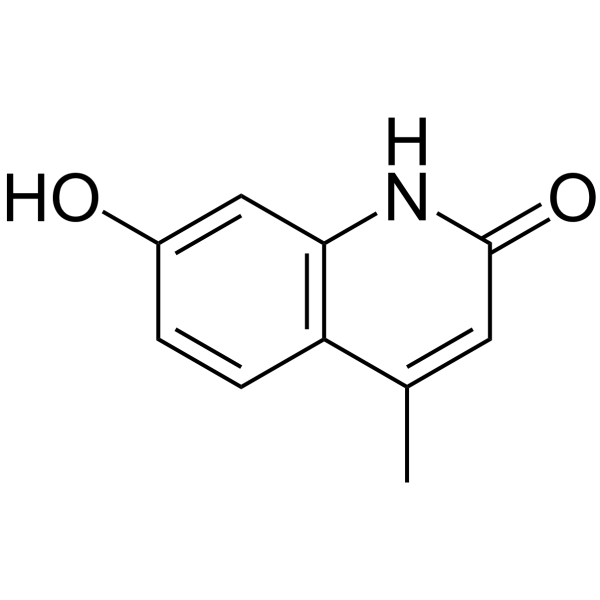2(1H)-Quinolinone,7-hydroxy-4-methyl-

2(1H)-Quinolinone,7-hydroxy-4-methyl- structure
|
Common Name | 2(1H)-Quinolinone,7-hydroxy-4-methyl- | ||
|---|---|---|---|---|
| CAS Number | 20513-71-7 | Molecular Weight | 175.18400 | |
| Density | 1.264 g/cm3 | Boiling Point | 417.8ºC at 760 mmHg | |
| Molecular Formula | C10H9NO2 | Melting Point | ≥250ºC(lit.) | |
| MSDS | Chinese USA | Flash Point | 206.5ºC | |
| Symbol |

GHS07 |
Signal Word | Warning | |
|
On the metabolism of quinoline and isoquinoline: possible molecular basis for differences in biological activities.
Carcinogenesis 4 , 1169-1173, (1983) Quinoline is a hepatocarcinogen in mice and rats, a mutagen in Salmonella typhimurium, and induces unscheduled DNA synthesis in primary cultures of rat hepatocytes. In contrast, isoquinoline has not been shown to be genotoxic. The metabolites of quinoline and... |
|
|
Microbial metabolism of quinoline and related compounds. XIX. Degradation of 4-methylquinoline and quinoline by Pseudomonas putida K1.
Biol. Chem. Hoppe-Seyler 374 , 479-488, (1993) A bacterial strain, designated K1, which utilizes 4-methylquinoline and quinoline as sole source of carbon, nitrogen and energy was isolated from soil. Based on its morphological and physiological characteristics, it was classified as Pseudomonas putida biova... |
Journals:
More...